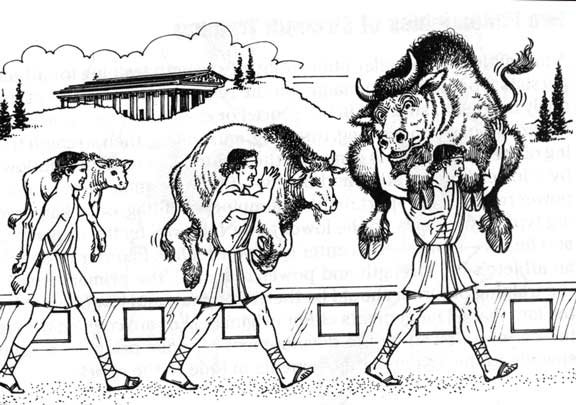Recently I had a conversation with someone at a nutrition convention at which I was speaking. It was lunchtime and we were discussing the new nutrition program released by the company that had hosted the event. This young woman had lost over one-hundred pounds on the program and looked fantastic (kudos to her). She eventually started to ask about me and my wife’s natural bodybuilding and figure competition prep, specifically how we trained. She had no desire to compete she said but wanted clues as to how to push her fat loss further along and achieve a more “toned” look.
To her amazement it was not as complicated or as time consuming as she thought. Everyone assumes that to achieve competition form or your “ideal physique” you need to spend hours in the gym. You don’t. Neither I nor my wife did any more than 100 minutes of training each week during our entire 2012 competition season and both of us achieved our all-time best condition.
Just a Busy Bodybuiler

You see, I’m a busy bodybuilder…a very busy “Fitness Freak”. Just to give some perspective, I own and operate a personal training studio where I carry out 40-50 sessions a week (purposely reduced from 60-70/week), I’m the president of a personal training education and certification company, a co-founder of a natural bodybuilding organization and a show promoter, a coach for other competitors, I write and do speaking engagements, take care of all the marketing for each of my businesses, do fundraising, and networking. And these are only my business related pursuits, I have not even touched on my personal and recreational activities.
This list is not meant to brag, I know that there are plenty of other people who do what I do and more. I use it to demonstrate that even with everything that consumes my day I can still body build at a high level. The key is to determine exactly how much time must be spent training to develop your physique. For me it is 90-100 minutes a week of weight training (I do not do any aerobic exercise). The other major component of course is diet. If you have your diet structured properly and give yourself enough time to lose body-fat slowly there is no reason to perform excessive amounts of aerobic exercise to burn calories.
I understand that for some, working out is their life, their passion, and they enjoy spending hours in the gym. But for those who would like to pursue their ideal physique or compete in bodybuilding/figure in the midst of a busy lifestyle where spare hours are few, you can. The first step is to move past the misconception of how much time is needed. Real science dismisses much of the pseudoscience revolving around muscle development and fat-loss.
Just the Facts
Fact: There is not a specific amount of time that a person needs train for in order to stimulate muscle growth.
Fact: There is not a specific number of reps or sets that need to be performed to stimulate muscle growth.
Fact: Muscle development only occurs under conditions where intensity of effort and/or training demands are high.
If you understand these three facts then you can succeed as a Busy Fitness Freak. As I mentioned I rarely train more than 100 minutes a week and I do not do any aerobic exercise, even during competition prep. My workouts—as well as the workouts of clients I work with—are typically 30 minutes long and normally performed only 2-4 times a week. The reason why is because of the three facts stated above, especially the last one.

The key to developing a time efficient training program is to keep intensity high by performing each set to (or close to) momentary muscular failure and continually finding ways to increase training demands. Without a high degree of effort or a disruption in what the muscles are accustomed to there is no reason for them to become stronger or more resilient. Let me ask, for what reason would muscles develop if they are not challenged?

Most serious trainees place heavy emphasis on weight progression, constantly trying to heave greater poundage’s from one workout to the next. This has always been a focal point of every successful training program but it’s not the only thing that should be focused on. In fact, we know through research that intensity of effort plays as big if not a bigger role than load since it is only when intensity is at or near one-hundred percent that we involve the greatest number of Fast-Twitch (FT) muscle fibers (Henneman’s size principle).
We have learned through the study of neurology that the more we perform certain movements (exercises) in the same manner the more we adapt to those movements and the more proficient we become at performing them. In the IART’s publication Fitness Science Annual 2008, Brian Johnston explains the negative implications of neuromuscular adaptation for the intermediate and advanced bodybuilder, in the quest to develop more muscle:
In strength training and bodybuilding, a greater focus has been placed on neurological adaptation, or the skill factor and its effect. It has been suggested that neurological/skill factors are a consideration only during the beginning stages of exercise, with less impact or influence on advanced trainees…However, this is not the entire story. Although the extent of neural factors may diminish, the nature of its role alters and becomes more finely tuned. To explain, the more muscle and strength a person develops, the more reluctant the body is to add more muscle and strength; and the more a person repeats the same exercises in the same way, the more skilled they become at those movements
Keeping the above in mind, as well as the importance of intensity, it should be apparent that a productive training regimen consists of varied, high-intensity exercise. The, high-intensity + variation formula, is a dependable stimulus for muscle development but by no means is it the only factor. We need to also consider recovery time and tolerance to exercise stress. It’s the application and balance of intensity, volume, variation and frequency, relative to individual needs that determines a person’s ability to develop a strong muscular physique while living a busy lifestyle. …And earning the title of Busy Fitness Freak.


























